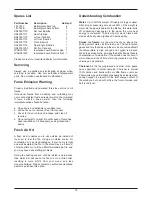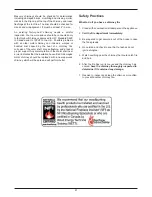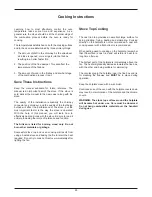
General
WARNING: HOT SURFACES, use the tool supplied to
operate this appliance. When raising the dome lids, it
is recommended that the heatproof glove supplied
with the stove, is used.
Air for combustion within the firebox is obtained by
the primary air intake on the ashpit door. The rate of
burning is determined by the manually operated
spinwheel control on the primary air intake.
Any air inlet grilles must be maintained and free from
blockage.
Failing to maintain your stove properly can lead to a
chimney fire. Combustible deposits (called creosote) are a
natural by-product of woodburning. A fire hazard exists if
1/4” of creosote (or more) coats the inner walls of the
chimney.
Fuelling with Wood
Woodburning
The firewood used will make an important contribution to
successful operation. The best performance and overall
efficiency will be achieved by burning firewood that has
been split, stacked and air-dried undercover from the rain
for at least one year. Burning improperly seasoned or
“green” wood can be a frustrating experience leading to
poor performance, smoky fires and a build-up of creosote.
Do not burn saltwater driftwood refuse, rubber tires, etc.
Use of improper fuels can cause a fire hazard and lead to
a premature deterioration of the stove components,
voiding the warranty.
Burn dry wood because:
z
it gives up to 25% higher efficiency;
z
it produces less creosote;
z
it ignites faster and smokes less;
z
valuable heat is lost in the fire as it dries out wet
wood.
Users Instructions
Getting to know the Stove
13
Fig. 10
DESN 515008














































